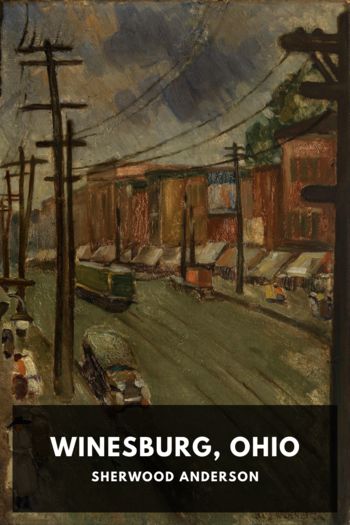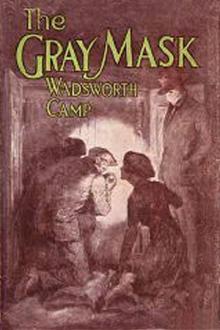the Spy (2010), Cussler Clive [free e reader TXT] 📗

- Author: Cussler Clive
Book online «the Spy (2010), Cussler Clive [free e reader TXT] 📗». Author Cussler Clive
Kent was shrugging out of his coat. Watching him was a short, stocky, athletic-looking Navy officer with an erect posture, a puffed-out chest, and a captain's bars on his shoulder boards. Bell could not see his face, but he could hear Kent shout, Damned detective. He knew exactly what to ask.
What did you tell him? the captain asked calmly.
Nothing. I had him thrown out of the yard. Impertinent busybody.
Did it occur to you that his visit concerned Alasdair MacDonald?
I didn't know what the hell to think. He gave me a case of the rattles.
The captain seized a bottle from the sideboard and poured a generous glass. As he thrust it at Kent, Bell finally saw his face-a youthful, vigorous face that ten years ago had been splashed reverently on every newspaper and magazine in the nation. His exploits in the Spanish-American War had rivaled those of Teddy Roosevelt's Rough Riders for coolheaded bravery.
Well, I'll be . . . said Bell, half aloud.
He shoved open the cabin door and strode inside.
Farley Kent jumped. The Navy captain did not, but merely regarded the tall detective with an expectant gaze.
Welcome aboard, Mr. Bell. When I learned the terrible news from Camden, I hoped you'd find your way here.
What is Hull 44?
Better to ask why Hull 44, answered Captain Lowell Falconer, the Hero of Santiago.
He offered a hand that had lost two fingers to shell splinters.
Bell closed it in his. It is an honor to make your acquaintance, sir.
Captain Falconer spoke into the voice pipe. Cast off.
Chapter 13
FEET POUNDED ON DECK. A LIEUTENANT APPEARED AT the door, and Falconer engaged him in urgent conversation. Farley, he called. You might as well get back to your loft. The architect left without a word. Falconer said, Please wait here, Bell. I won't be a minute. He stepped outside with his lieutenant.
Bell had seen the Reuterdahl painting of the Great White Fleet on the cover of Collier's magazine last January. The fleet lay anchored in the harbor of Rio de Janeiro. A native boat was rowing toward the bright white hull of the anchored flagship Connecticut, waving an advertisement that read:
American Drinks. SQUARE DEAL at JS Guvidor
Smoke and shadow in a dark corner of the sunny harbor scene obscured the sleek gray hull of a German cruiser.
The deck moved under Bell's feet. The yacht began backing out of her slip into the East River. When she engaged her propellers ahead and wheeled downstream, Bell felt no vibrations, nor even the faintest throbbing of the engines. Captain Falconer stepped back into the cabin, and Bell gave his host a curious glance. I've never been on such a smooth-running steam yacht.
Falconer grinned proudly. Turbines, he said. Three of them, linked to nine screw propellers.
He pointed at another painting, one which Bell had not seen from the porthole. It depicted Turbinia, the famous experimental turbine-powered vessel Alasdair MacDonald's mentor had raced through an international gathering of naval fleets at Spitshead, England, to dramatize turbine speed.
Charles Parsons left nothing to chance. In the event that something went wrong with Turbinia, he built two turbine racers. This one's named Dyname. Do you remember your Greek?
The result of forces acting together.
Very good! Dyname is actually Turbinia's big sister, a trifle beamier, modeled after the torpedo boats of the nineties. I had her refitted as a yacht and converted her boilers to oil, which opened up a lot of space in the former coal bunkers. Poor Alasdair used her as a test craft and modified the turbines. Thanks to him, even though she's beamier than Turbinia, she burns less fuel and goes faster.
How fast?
Falconer laid an affectionate hand on Dyname's varnished mahogany and grinned. You would not believe me if I told you.
The tall detective grinned back. I wouldn't mind a trick at the helm.
Wait 'til we're out of congested waters. I don't dare open her up in the harbor.
The yacht steamed down the East River into the Upper Bay and increased her speed dramatically. Quite a clip, said Bell.
Falconer chuckled, We rein her in until we reach the open sea.
The lights of Manhattan Island faded astern. A steward appeared bearing covered dishes and spread them on the table. Captain Falconer bid Bell sit across from him.
Bell stood where he was, and asked, What is Hull 44?
Please join me for supper, and while we head to sea I will tell you the secret of why Hull 44.
Falconer began by echoing Alasdair MacDonald's lament. It's ten years since Germany started building a modern Navy. The same year we captured the Philippine Islands and annexed the Kingdom of Hawaii. Today, the Germans have dreadnought battleships. The British have dreadnought battleships, and the Japanese are building, and buying, dreadnought battleships. So when the U.S. Navy embarks on distant service to defend America's new territories in the Pacific, we will be outclassed and outgunned by the Germans and the British and the Empire of Japan.
Brimming with such zeal that he left his beefsteak untouched, Captain Falconer regaled Isaac Bell with the dream behind Hull 44. The dreadnaught race teaches that change is always preceded by a universal conviction that there is nothing new under the sun. Before the British launched HMS Dreadnaught, two facts about battleships were engraved in stone. They took many years to build and they had to be armed with a great variety of guns to defend themselves. HMS Dreadnaught is an all-big-guns ship, and they built her in a single year, which changed the world forever.
Hull 44 is my response. America's response.
I recruited the best brains in the fighting-ship business. I told them to do their damnedest! Men like Artie Langner, the Gunner,' and Alasdair, whom you met.
And saw die, Bell interrupted grimly.
Artists, every one of them. But like all artists, they're misfits. Bohemians, eccentrics, if not plain loony. Not the





Comments (0)